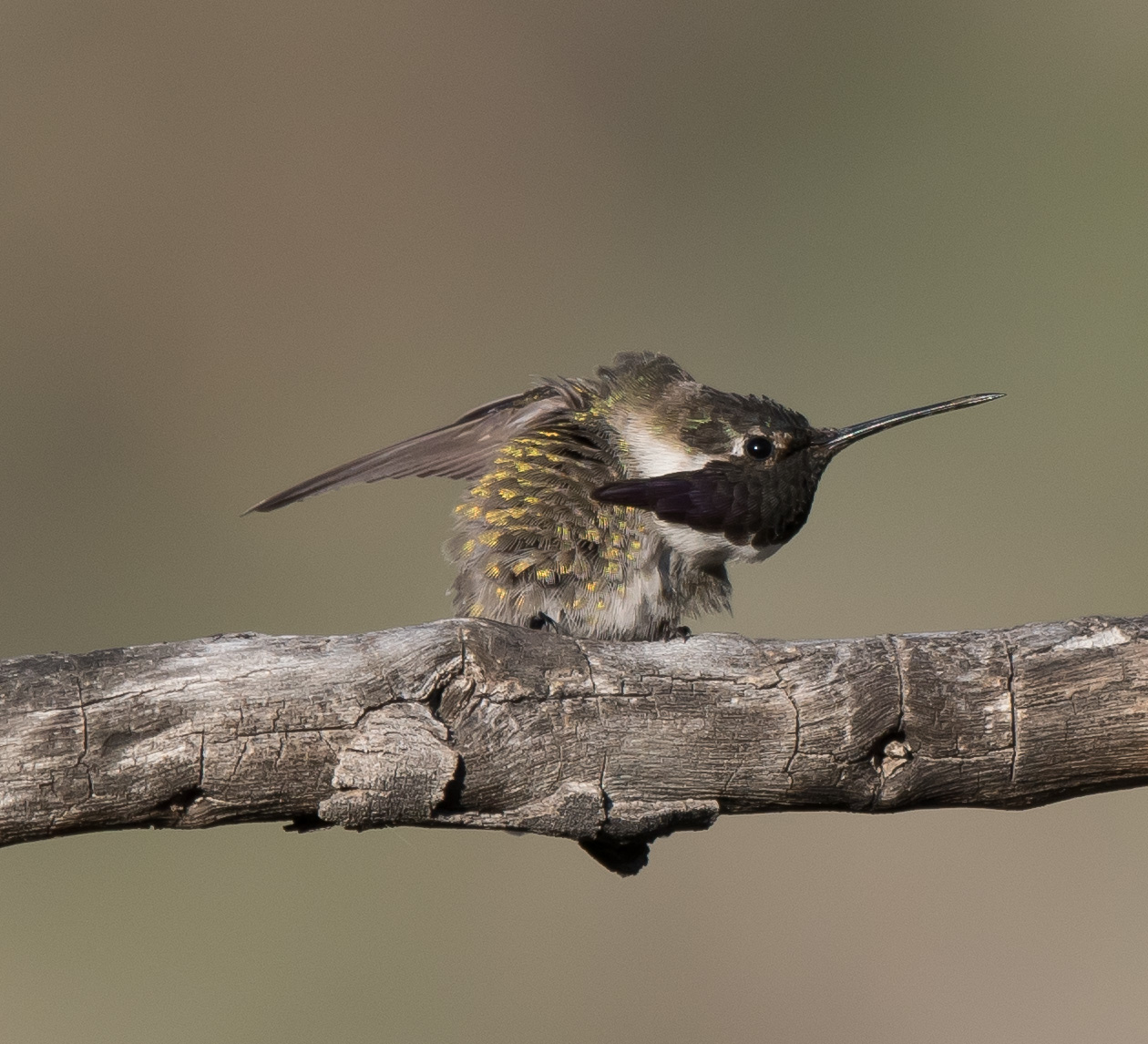Title of this post is probably a bit melodramatic, but after reflecting on this adventure, it did seem a bit apropos. On Saturday April 19th, I had the pleasure of birding the Pinal Mountains with a couple of friends that just happen to be excellent birders as well; Marceline VandeWater and Muriel Neddermeyer. The Pinal Mountains are located just south of Globe, Arizona which is about 1½ hours from Mesa. This is another great spot to visit in the middle of the summer when the heat of the lower elevations is stifling. Temperatures can be 30 to 40 degrees cooler around the summit. Before the day was over we would see and drive in falling snow and at least one of us ended the day in shorts sipping a beer on a patio in sunshine and heat. It made for an interesting day.
We starting listing birds on the south edge of Globe en-route to the summit and back. For the day we ended up with a total of 75 species of birds, so we were not disappointed. Warblers were part of our main objective and we managed to see 10 species of warblers, but with overcast skies and the typical frenetic feeding habits of warblers, photos were a bit tough to capture. But at least one warbler must have felt a bit sorry for me and offered some photos and this was the Olive Warbler. This is a bird I have seen briefly about 4 times, but have never been able to acquire a decent photo and on this day a very stunning male was fairly cooperative even with the bad lighting. When I get a decent photo of a bird like this, it is almost like seeing it again for the first time.
Olive Warbler
Olive Warbler
At the very same spot, we had a couple of Red-faced Warblers also make a showing and these birds are also stunning. What is interesting is that both of these warblers have ranges pretty much restricted to Arizona and New Mexico in the United States. The Olive is a resident bird and I have seen them in snow, but the Red-faced is a summer resident only, spending its winters is southwestern Mexico.
Red-faced Warbler
Red-faced Warbler
We also observed 4 species of vireos on this trip; Plumbeous, Cassin's, Gray, and Warbling Vireos. Of these birds, I was only able to capture photos of 2 of them, the Cassin's Vireo and the Warbling Vireo.
Cassin's Vireo
Warbling Vireo
Photos are not always a given, never are and never will be, but it just adds to the chase when finding birds. Just getting out and enjoying the birds, their songs and their wonderful and refreshing habitats is what it is all about. Even with snow falling on our road with thunder and lightening being seen and heard, we definitely had a lot of fun and are already planning another trip in the near future. Oh yes, did not want anyone to think the snow was a fabrication to embellish the post, so I have to add a couple of photos of the vehicle and the road. Photos courtesy of Marceline VandeWater. Have to thank her for offering them for use in my blog post and for thinking ahead and jumping out to capture a couple of shots. (Aren't the pine trees along the road gorgeous?)
Yep, this is snow!
























